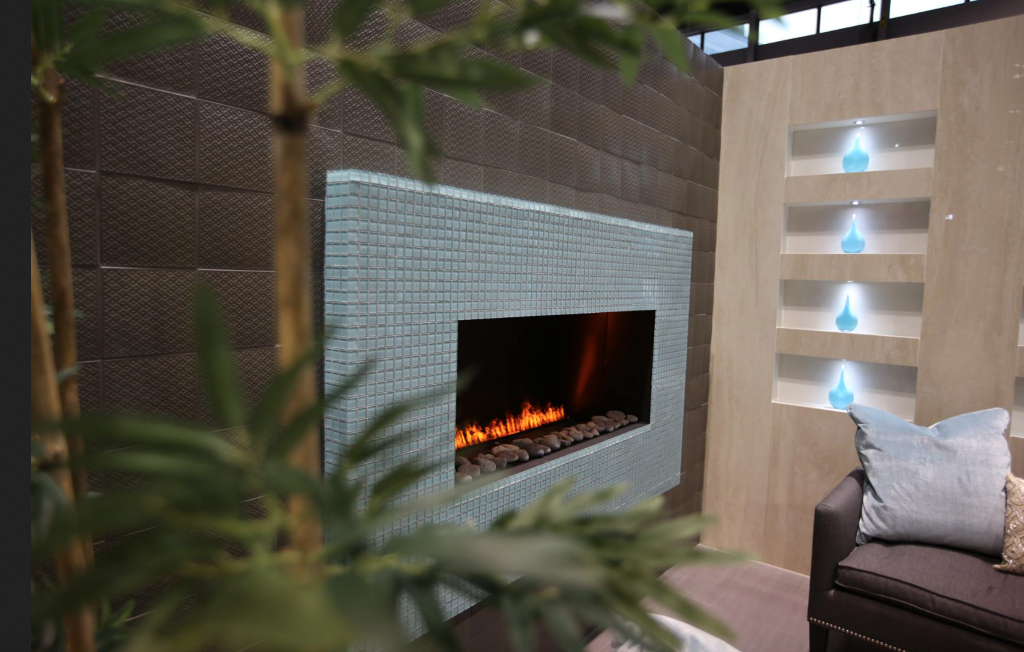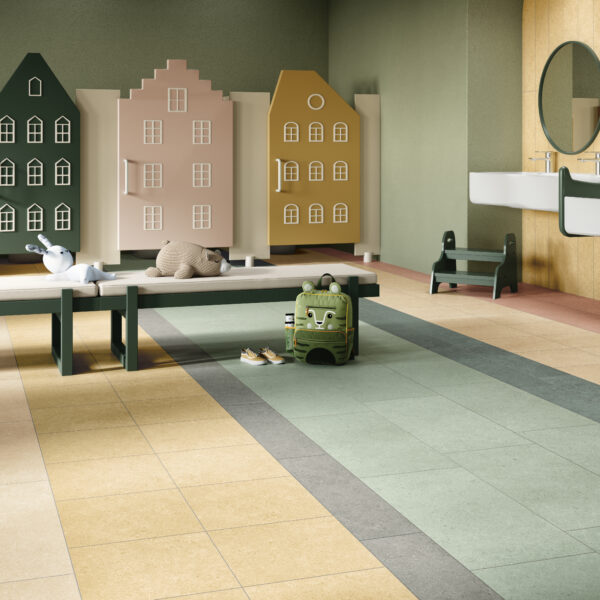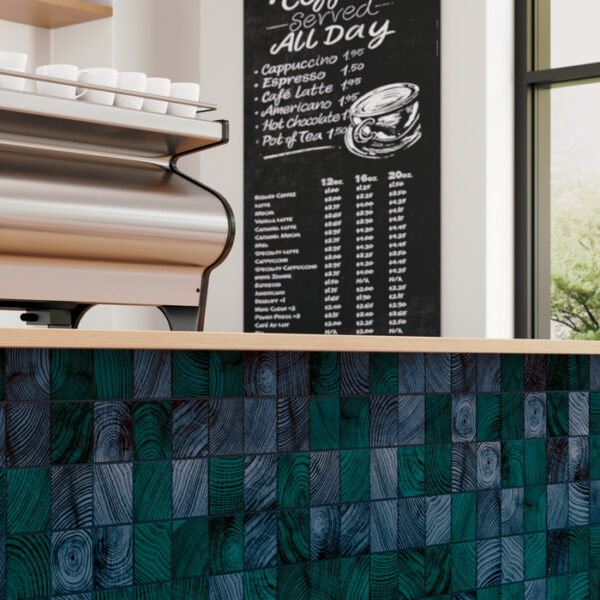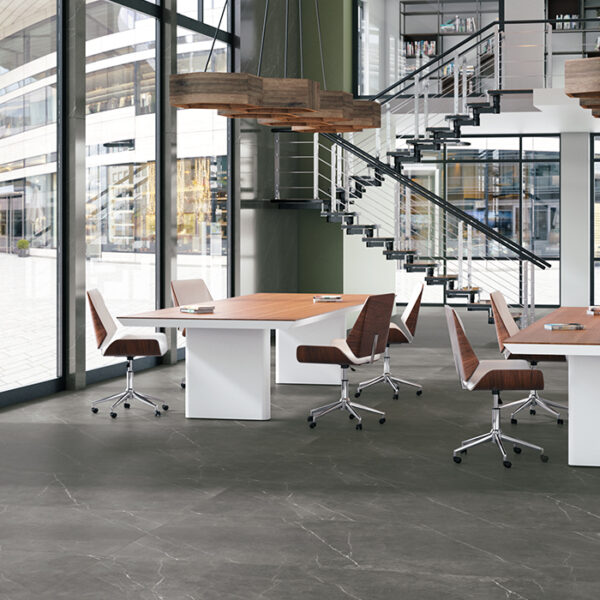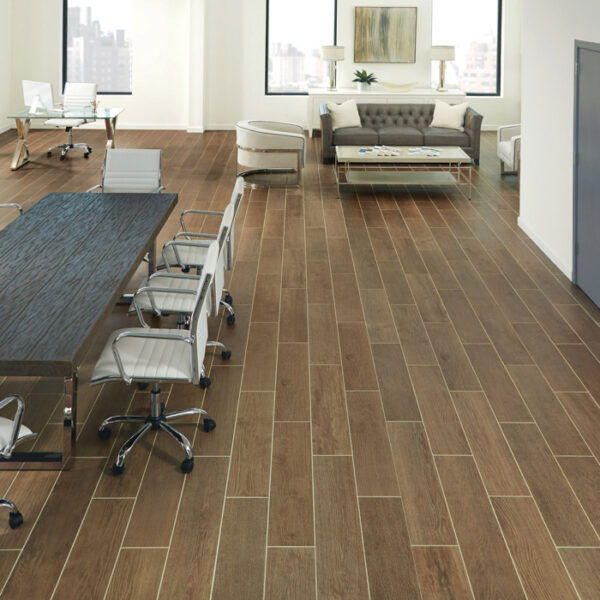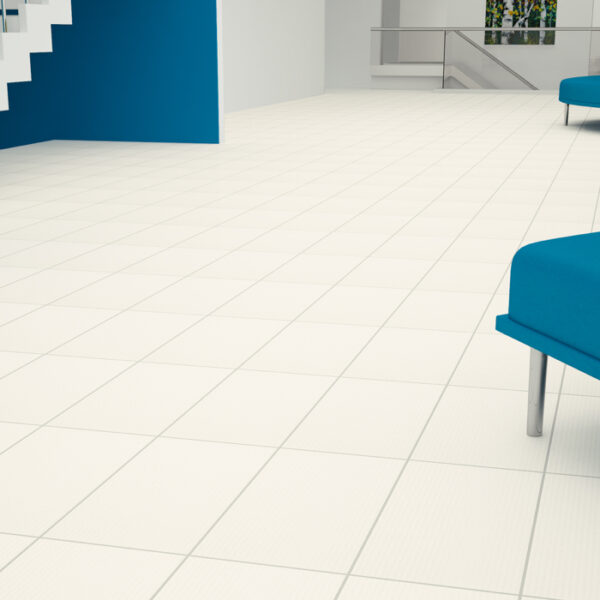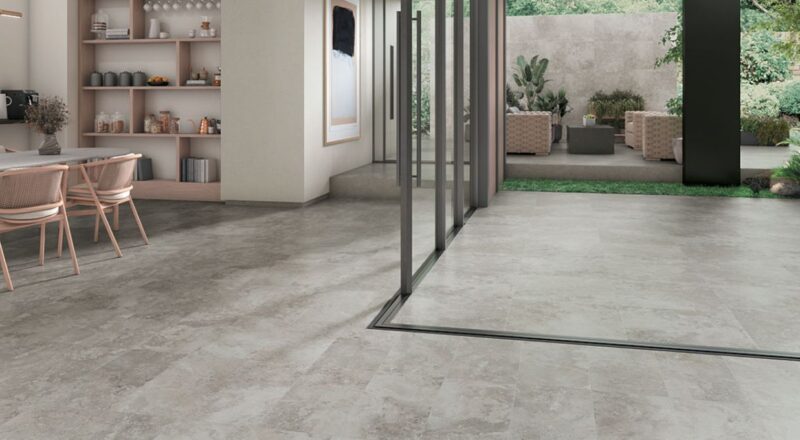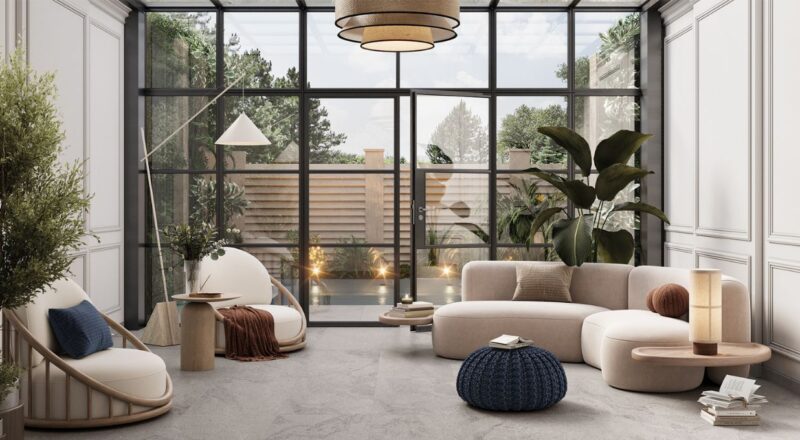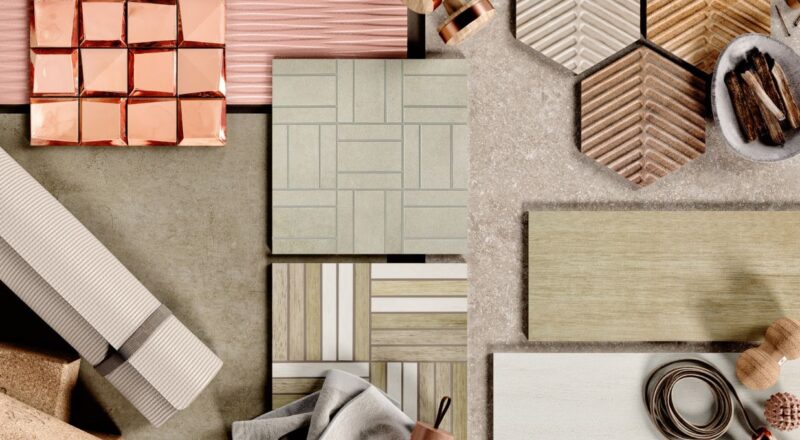Biophilic design connects modern building components with our innermost need for immersion with nature. However, it entails so much more than creating a design scheme that includes a living plant feature or cascading water element in a space. True biophilic design encompasses the whole being and our five human senses, and it also incorporates our environmental awareness. The goal of biophilic design is to create a good habitat for humans. We are biologic organisms living, working, and existing within modern structures,. The design that enfolds us in these structures should incorporate elements to help us stay in connection with the natural world.
Inherently, product design and manufacturing have to evolve to meet changing design needs, and Crossville continues to lead the industry with options for biophilic design components. For example, our Retro Active 2.0 collection holds the prestigious Living Product Challenge Petal Certifications in three categories: place, water, and beauty. The Living Product Challenge is a recognition program of the International Living Future Institute.

The Living Product Challenge is organized in seven performance areas, known as Petals, with each area consisting of detailed requirements. Retro Active 2.0 is recognized in the following:
– Place Petal – 2/2 for meeting requirements that included responsible place and habitat impacts
– Water Petal – 1/1 for meeting requirements that included net positive for water
– Beauty Petal – 3/3 for meeting requirements that included beauty and spirit, inspiration and education, and positive handprinting
When considering biophilic design, designers and consumers can use the Living Product Challenge framework to help choose products that are healthy and free of toxins, knowing that the manufacturers of products earning certification through this program are socially and environmentally responsible. Manufacturers are choosing to certify their products as demonstration of commitments to the highest standards of non-toxic, responsible material selection and processing that results in net positive benefits for humans and the environment.
We aren’t new to the biophilic design concept and we have been committed to healthy design through environmentally-conscious products for many years. Design firms creating high profile biophilic designs have turned to us for tile solutions to achieve the looks and technical specifications desired for their projects.

Healing Environments Spa Vignette:
Through a partnership with Healing Environments, our products were prominently featured in the award-winning Installation Design Showcase Spa Lobby Vignette at Coverings 2016 designed by design firm Healing Environments. As explained by Healing Environments owner and principal designer Susan El-Naggar, ASID, NCIDQ, LEED Green Associate, “The focus of our architecture and interior design firm is to create healthy environments that promote healing and inner peace for the whole client—mind, body, and spirit—through green and sustainable design.” El-Naggar shared that she and her team were “very excited to work with Crossville, since it is the first manufacturer to earn Green Squared certification for all its U.S.-made collections—the recognized sustainability standard in the industry.” The spa vignette featuring its biophilic design won first place in the “Contract Project by a Small Firm” category at the 2016 ASID Illinois Design Excellence Awards.

Riverbed Technology Customer Center:
Our porcelain tile collections play a prominent role in the flooring design at Riverbed Technology Customer Center, a LEED Gold Gensler project in San Francisco, California. In designing this bustling office space, Gensler sought to address “…our innate and inherent desire, conscious or subconscious, to be connected to familiar natural habitats” through the application of biophilia, which presupposes that humans are instinctually connected to nature. To achieve this effect, the design team specified our Shades porcelain tile in tones reminiscent of river rocks—a nod to the company’s name—to create visual representations of nature. This is especially evident in a long, curving corridor inspired by the undulating curves of a living river.
Biophilic design encompasses more than the sustainable processes by which products are manufactured; it also focuses on the ways the products themselves evoke and mimic nature, as well. Many of Crossville’s tile collections draw upon nature for inspiration. Here are just a few examples.

Convergence Glass Mosaics: Our Convergence wall tile collection offers the look of end-grain wood captured in rich, jewel tones and cast in polished glass mosaics. The mosaics’ melding of bio-mimicry with an artistic splash of colors beautifully enables designers to bring in a natural looking element while maintaining high-quality product specifications.

Nest Porcelain Tile: Nest captures the look of wood in porcelain tile planks that are offered in two species—Olive and Oak. The authentic, sophisticated details and range of true wood hues bring soothing, natural style to commercial or residential design.

I Naturali Gauged Porcelain Tile Panels: Our innovative I Naturali series draws stunning inspiration from some of the earth’s most stunning and elegant marbles. The veining and nuances of the options in this collection, interpreted in generously sized tile panels, envelope spaces in natural design.

Argent Porcelain Tile: The appearance of argent stone comes to the forefront of design in this versatile tile collection. Featuring a range of colors, each with texture and surface visuals mimicking argent’s true stone style, the line is a bold option for bringing nature into design.
As designers continue to emphasize biophilic design, we find it’s an exciting time to manufacture products and hold to standards that help people positively interact within interior spaces.

